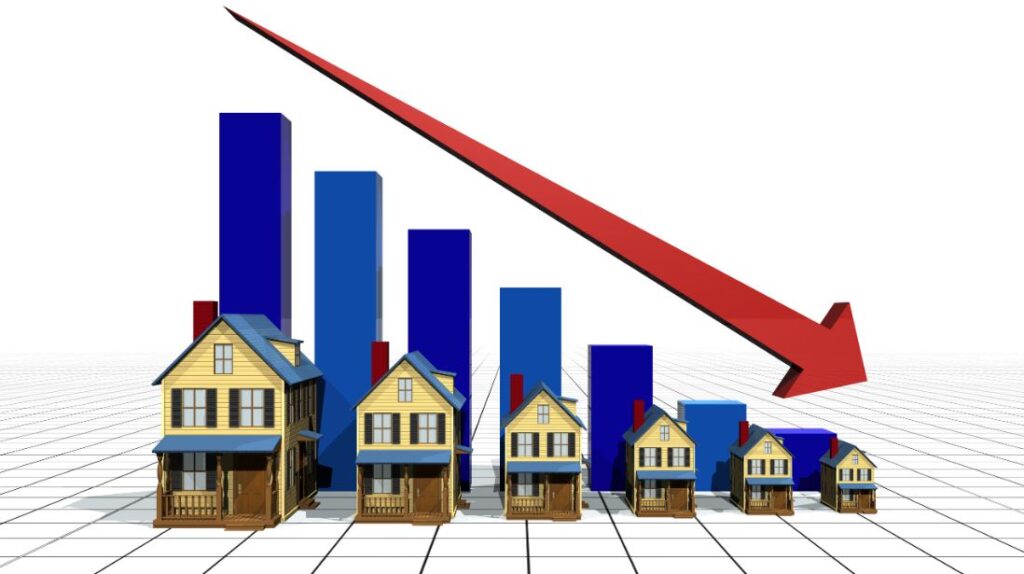
The idea that “real estate investment never leads to losses” is a popular belief among investors. There is a widespread belief that if you hang onto a property long enough, you will always make money. Let us try to figure out if it is true.
How do investors calculate loss and gain? Investors calculate losses and gains depending on the purchase price. If they sell a home for less than the price they purchased, they consider it a loss. If they can sell it at a higher price, they will profit. While this technique has popularity, it ignores two important considerations, namely the opportunity cost and time value of money. When real estate values decline, many investors are hesitant to sell their properties for a loss. They stay on, confident that prices would return if they wait long enough. They take comfort in this as they believe that not selling at a loss is equivalent to not experiencing a financial setback. They wait for the market to give a price that reaches or surpasses their purchase price before selling, maintaining the notion that real estate investments are risk-free.
Opportunity cost
Many investors fail to consider the opportunity cost, or the gains they could have received by investing their money elsewhere. This is a vital concept that, when considered in a larger context, may transform what appears to be a successful transaction into a financial loss.
Time value of money
The time worth of money is another important consideration that many investors neglect. We’re all aware that money loses value over time due to inflation. The value of Rs. 100 now is more than that of Rs. 100 five years later. This reminds me a joke on inflation that circulates in social media that – “People in India are getting stronger. Twenty years ago, it took two people to carry 500 rupees worth of groceries. Today, a five year old boy could do it with ease.”
Let us take an actual scenario. A friend of my father possessed a home for which he was receiving bids ranging from Rs. 4 crore to Rs. 4.5 crore. However, he was adamant not to sell for less than Rs. 5 crore. He eventually sold the home for the Rs. 5 crore he had wanted after holding onto it for five years. On the face of it, it may appear to be a successful investment. But did he actually secure a profitable deal?
Although he finally sold his home for the desired price of Rs. 5 crore, he suffered a huge loss in terms of opportunity cost. Had he sold the home for Rs. 4.5 crore five years ago and deposited the proceeds in a fixed deposit (FD) generating 7% annual returns, his investment would today be worth Rs. 6.3 crore. By keeping the property, he lost out on 1.3 crore in prospective earnings from a secure investment. Consider the following scenario: he invested in a diversified mutual fund portfolio with an annual return of 10%. In five years, his estimated investment value would have increased to Rs. 7.3 crore, resulting in an opportunity cost of a whopping Rs. 2.8 crore.
Though he received the desired price, inflation reduced the purchasing power of the Rs. 5 crore over a five-year period.
For example, assuming a 7% rate of lifestyle inflation, the 5 crore he received today is equivalent to Rs. 3.56 crore in purchasing power, compared to five years ago. While he may believe he achieved a nominal profit, he really lost money in real terms after accounting for inflation.
Recognizing that real estate investments are susceptible to total losses is crucial.

Consider another example, where my father bought a house in 1994 for Rs. 4 lakhs. The current worth of the house is Rs. 40 lakhs. My father self-boasts it with pride by saying that his property’s worth has multiplied by 10-fold in the past 30 years. But when we try to calculate the absolute profit that he shall receive from the property, the annualised return is just 7%. This 7% return he would have easily got from a FD in a bank. Also, if we consider the inflation into this returns calculation, then he would have barely got any returns or even a negative return from this property transaction, as inflation was more than 7% in many of the past 30 years.
To make this calculation still more worrisome, if we consider the bank loan that he had taken to fund this property, then the returns from this real estate property are definitely hugely negative (also, loan interest rate environment in the 1990’s and in 2000s were in double digits). But I am not going into the nitty-gritty of those bank loan calculations here, as one may argue that the home loan EMI may somewhat compensate for the rent he would have paid if he had not bought that property to live-in (despite the fact that rent in India is far less than the home loan EMI that we pay – the ratio of rent to EMI may be 1:3 or even sometimes 1:4).
The main notion here is that, while real estate investments do rise significantly, the returns are not particularly outstanding, especially when compared to other asset types.
Being overexposed to a particular asset type, such as real estate, would potentially subject you to large downturns when compared to other potential investments that could have provided higher returns with superior liquidity and no trouble of maintaining them.
As a result, it is always necessary to take a balanced approach when making investments, especially when dealing with large-ticket real estate transactions. It is critical to have a well-diversified investment portfolio that includes stocks, bonds, gold, and real estate. If an asset class is going through a speculative boom, we must be especially careful. When everyone rushes into a given asset class, prices are often already overvalued, increasing the risk of losses (whether in absolute terms or through opportunity cost).
Any asset may experience a price correction, a time correction, or both. Being aware of these fundamentals can help you make more informed investing decisions.





